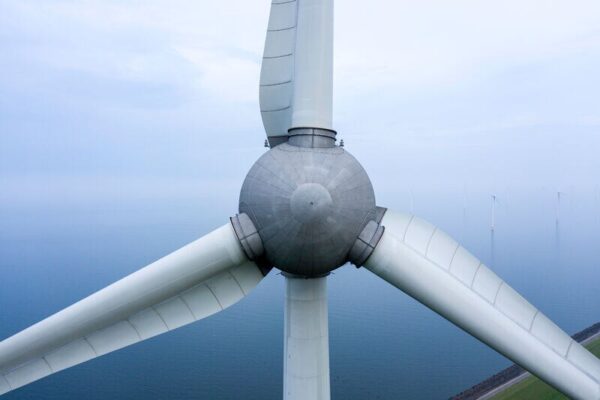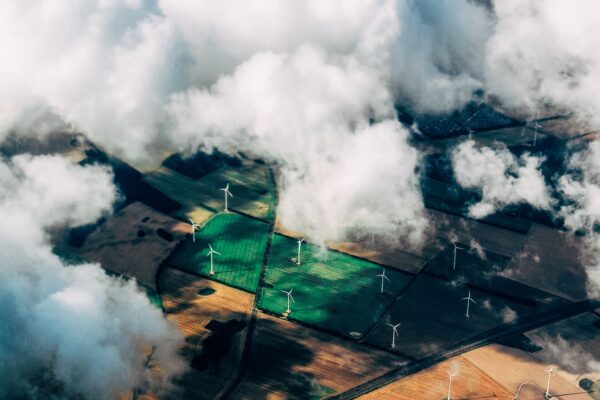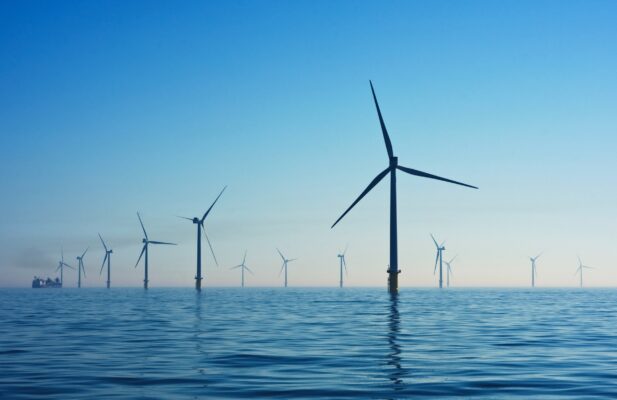Bigger and more powerful blades
In the initial stages of offshore wind energy development, turbines typically had capacities of around 450 kW. The world’s first offshore wind farm, Vindeby, was built in 1991 by Siemens Gamesa. It featured 11 Bonus 450 kW wind turbines. Fast forward to today, and we are witnessing the deployment of turbines with impressive capacities of up to 15 MW. The average blade spans approximately 140 meters from tip to tip, comparable to the wingspan of an average passenger airplane. However, even these measurements are overshadowed by newer designs. Introduced in February 2021, the Vestas V236-15.0 MW turbine is the world’s largest, with a 15 MW nameplate capacity. Each blade measures 115.5 m in length. The introduction of these giants leads to more energy generation per unit, thereby reducing the cost per MWh of offshore wind energy and bringing it closer to parity with conventional energy sources.
Floating foundations
Floating foundations represent a significant advancement in offshore wind turbine technology. Unlike traditional foundations, such as monopiles or jacket foundations that anchor directly to the seabed, floating foundations offer a different approach. The conventional anchoring method has limitations, particularly in deeper waters where installation becomes more challenging. Such installations require thorough site investigations, longer piles, larger foundation structures, and specialized vessels and equipment, leading to increased costs. Floating foundations address these challenges, allowing turbines to be anchored in deeper waters without the necessity for extensive and expensive underwater infrastructure. This expands the potential sites for wind farms and harnesses the benefits of stronger and more consistent wind currents found over deeper waters. Consequently, floating foundations hold the promise to significantly enhance the efficiency and scope of offshore wind energy production.
More resilient bearings
Bearings are vital for the smooth operation of wind turbines, especially in challenging marine environments. Operating amid high levels of moisture, salinity, and mechanical stress, these bearings require materials of the utmost quality. Recent breakthroughs in material science and design have paved the way for more durable and efficient bearings. New materials, such as high-grade stainless steel or super duplex stainless steel, resist corrosion, wear, and fatigue, while innovative designs optimize load distribution and lubrication. Additionally, the integration of ceramics, like silicon nitride, offers reduced friction and enhanced wear resistance. All these improvements significantly reduce maintenance needs, especially in hard-to-reach offshore locations, and extend the turbine’s lifespan.
Sophisticated maintenance and monitoring systems
Offshore wind turbines are reaping the benefits of advanced technologies such as drone surveillance and sensors. These tools offer precise monitoring capabilities, enabling early detection and prediction of potential problems, thereby reducing downtime. Robotics and automation have revolutionized maintenance, transforming tasks that were previously hazardous for humans into efficient and safe operations. Moreover, accurate weather forecasting is essential for offshore setups. Utilizing state-of-the-art meteorological tools and predictive analytics, operators can now predict wind patterns with greater accuracy. This ensures optimized energy production and enhances the safety of maintenance crews working in challenging marine environments.
Cutting-edge subsea cables
The core of modern subsea cables consists of high-purity conductive materials such as copper or aluminum. These are wrapped in insulating layers, often made from cross-linked polyethylene, which safeguard against electrical leakage, undersea currents, and damage from marine life. The exterior of these cables boasts armored sheaths, frequently made of galvanized steel, providing structural strength, and shielding from mechanical stresses. Thanks to their advanced design and materials, these cables ensure reduced transmission losses, leading to efficient and reliable energy transfer.
Power up, cost down
As a result of these advancements, the levelized cost of electricity for offshore wind has fallen substantially, from around €150 per MWh in 2015 to a projected less than €50 per MWh by 2024. In the coming decades, research in the field of offshore wind farming is expected to make even more significant strides, focusing on enhanced efficiency, sustainability, and integration into global energy grids. Additionally, the implementation of energy storage solutions, such as advanced battery systems and green hydrogen production, will become crucial to ensure a consistent energy supply, even during periods of low wind. Moreover, technological developments will be complemented by rigorous environmental impact studies to ensure that the expansion of offshore wind farms does not negatively impact marine ecosystems.



